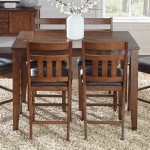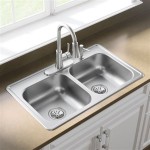Kitchen Sink Single Bowl Drop-In: A Comprehensive Guide
The kitchen sink is an indispensable fixture in any modern home. It serves as a central hub for food preparation, cleaning, and general household tasks. Among the diverse range of kitchen sink options available, the single bowl drop-in sink remains a popular choice, known for its practicality, ease of installation, and versatility. This article provides a comprehensive overview of the kitchen sink single bowl drop-in, encompassing its features, advantages, disadvantages, factors to consider when choosing one, installation procedures, and maintenance tips.
A single bowl sink, as its name suggests, features a single basin. This design maximizes usable space within the sink, allowing for the accommodation of large pots, pans, and dishes. The "drop-in" designation refers to the installation method. A drop-in sink, also known as a top-mount sink, is installed by simply dropping it into a pre-cut hole in the countertop. The sink's rim rests on the countertop, providing support and creating a watertight seal.
Key Features of a Single Bowl Drop-In Kitchen Sink
Several features distinguish single bowl drop-in sinks from other types. Understanding these features is crucial for making an informed purchasing decision.
Material: Drop-in sinks are available in a wide array of materials, each offering distinct aesthetic and functional characteristics. Stainless steel is a common choice, prized for its durability, resistance to stains and corrosion, and relatively low cost. Other popular materials include cast iron with an enamel coating, known for its exceptional durability and classic appearance; composite granite, valued for its resistance to scratches, heat, and stains; and fireclay, appreciated for its elegant look and resistance to high temperatures. The selection of material will greatly impact the durability, appearance, and maintenance requirements of the sink.
Size and Dimensions: Single bowl drop-in sinks come in various sizes and depths. The ideal size depends on the available countertop space, the user's typical workload, and personal preferences. Smaller sinks are suitable for compact kitchens or for use as secondary sinks. Larger, deeper sinks offer greater versatility for handling bulky items and minimizing water splashing. Careful consideration of the sink's dimensions is essential to ensure it fits properly within the designated space and meets the user's needs.
Gauge (for Stainless Steel): For stainless steel sinks, the gauge indicates the thickness of the steel. A lower gauge number signifies a thicker and more durable sink. Typically, gauges range from 16 to 22. A 16-gauge stainless steel sink is thicker and more resistant to dents and scratches than a 22-gauge sink. While thicker gauges generally offer better durability, they also tend to be more expensive.
Bowl Depth: The bowl depth refers to the vertical distance from the top of the sink to the bottom of the bowl. Deeper bowls allow for easier washing of large items and minimize splashing. However, excessively deep bowls can be uncomfortable for some users, requiring them to bend over further during use.
Number of Faucet Holes: Drop-in sinks usually come with pre-drilled holes for faucet installation. The number and arrangement of these holes should align with the intended faucet and accessory configuration. Sinks with a single hole accommodate single-handle faucets, while those with three holes are designed for widespread faucets. Some sinks may also have additional holes for accessories like soap dispensers or sprayers.
Advantages and Disadvantages of Single Bowl Drop-In Sinks
Like any product, single bowl drop-in sinks offer both advantages and disadvantages. Weighing these factors is important for determining if this type of sink is the right choice for a particular kitchen.
Advantages:
Ease of Installation: One of the primary attractions of drop-in sinks is their relatively simple installation process. They are designed to be easily dropped into a pre-cut hole in the countertop, making them a suitable option for DIY enthusiasts and those seeking to minimize installation costs. The rim of the sink provides a secure and stable mounting surface.
Cost-Effectiveness: Drop-in sinks are generally more affordable than other sink types, such as undermount or farmhouse sinks. This affordability stems from their simpler design and easier manufacturing process. For budget-conscious homeowners, a drop-in sink can be a practical and economical choice.
Versatility: Single bowl drop-in sinks are available in a wide range of materials, sizes, and styles, making them adaptable to various kitchen designs and personal preferences. They can complement both traditional and contemporary kitchen aesthetics.
Large Basin Space: The single bowl design maximizes the usable space within the sink, allowing for easy washing of large pots, pans, and dishes. This is particularly beneficial for households that frequently cook or entertain.
Disadvantages:
Lip or Rim: The rim of the drop-in sink sits on top of the countertop, which can create a slight lip that is difficult to clean and may trap food particles and debris. This is a common criticism of drop-in sinks compared to undermount models.
Aesthetic Considerations: Some homeowners find the visible rim of a drop-in sink less aesthetically appealing than the seamless look of an undermount sink. The rim can interrupt the smooth flow of the countertop surface.
Countertop Material Limitations: Drop-in sinks are typically not recommended for use with certain countertop materials, such as solid surface or quartz, where an undermount installation is preferred for a more integrated and seamless look.
Factors to Consider When Choosing a Kitchen Sink Single Bowl Drop-In
Selecting the right single bowl drop-in kitchen sink involves careful consideration of several factors. These factors will help ensure that the chosen sink meets the user's specific needs and preferences.
Kitchen Size and Layout: The size of the kitchen and its overall layout will influence the optimal size and configuration of the sink. In smaller kitchens, a compact single bowl sink may be the best option to maximize countertop space. Larger kitchens can accommodate larger sinks with deeper bowls.
Usage Patterns: Consider how the sink will be used most frequently. If the sink is primarily used for washing large pots and pans, a deep, wide single bowl sink is preferable. If the sink is primarily used for rinsing vegetables or washing smaller items, a shallower bowl may suffice.
Countertop Material: The countertop material should be compatible with a drop-in sink installation. While drop-in sinks can be used with laminate, tile, or certain solid surface countertops, undermount sinks may be a better choice for granite, quartz, or marble countertops.
Budget: Set a realistic budget for the sink and accessories. Prices vary significantly depending on the material, size, and features of the sink. Stainless steel sinks are generally more affordable than cast iron or composite granite sinks.
Style and Aesthetics: Choose a sink that complements the overall style and décor of the kitchen. Consider the shape, finish, and design details of the sink to ensure it integrates seamlessly with the existing elements.
Accessories: Determine which accessories are needed or desired. Common accessories include sink grids, drain strainers, cutting boards, and colanders. These accessories can enhance the functionality and convenience of the sink.
Faucet Compatibility: Ensure the sink has the appropriate number and arrangement of faucet holes to accommodate the chosen faucet. Consider the style and finish of the faucet to match the sink and the overall kitchen design.
Ease of Cleaning and Maintenance: Choose a sink material that is easy to clean and maintain. Stainless steel, composite granite, and fireclay sinks are generally resistant to stains and scratches and can be easily cleaned with common household cleaners. Cast iron sinks with enamel coatings require more careful maintenance to prevent chipping and staining.
By carefully evaluating these factors, homeowners can select a kitchen sink single bowl drop-in that meets their specific needs, budget, and aesthetic preferences.

Ruvati 25 X 22 Inch Drop In Topmount Kitchen Sink 16 Gauge Stainless Steel Single Bowl Rvm5025 Usa

Fsd21404 Top Mount Single Stainless Steel Kitchen Sink

Verse 33 Top Mount Single Bowl Kitchen Sink 20060 1 Kohler

Single Bowl Drop In Workstation Kitchen Sink With Accessories Kraus

Karran Quartz 33 In Large Single Bowl Drop Kitchen Sink Black Qt 812 Bl The Home

Kitchen Sink Stainless Steel Drop In Top Mount 33 X Singapore Ubuy

33 Drop In Granite Single Bowl Undermount Kitchen Sink Grey

Allen Roth Fenway Drop In 33 X 22 Stainless Steel Single Bowl 4 Hole Kitchen Sink Vt3322a18 S At Lowes Com

33 Drop In Undermount 18 Ga Stainless Sink Pull Down Faucet

Ruvati 33 X 22 Inch Drop In 16 Gauge Stainless Steel Rounded Corners Topmount Kitchen Sink Single Bowl Rvh8005 Usa








